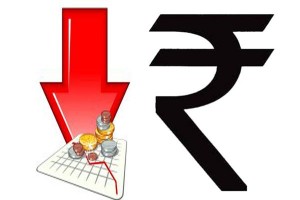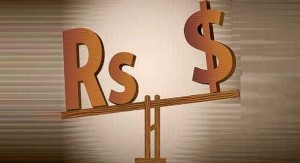On Wednesday, August 28 2013, the Indian Rupee touched an all-time low, and was trending at Rs.68.80 for $1. And the sharp decline in the nation’s currency value along with an increasing current account deficit has got many individuals worrying about the possibility of an economic crisis similar to the one in 1991.
It was only two years ago when India’s double digit growth was widely rejoiced by Indian economists, and became tabloid fodder for the media which published several stories titled ‘India’s Story’ pertaining to the nation’s economic miracle. Indeed, the growth rate of 10 percent sounded promising for a country that has been desperately trying to gain a foothold in the worldwide economic scenario.
Sadly, the celebrations of the past few years have come to an end as the growth rates slumped down to just 5 percent in the last few days. The Indian Rupee has fallen a staggering 16 percent against the American dollar and the Bombay stock exchange has recorded the lowest reading in over 11 months. For the first time in 12 years, car sales in the country have started showing a negative growth!
India is not the only country that has been affected by the economic revival in the US. However, it has fared worse than the economies of other countries like Brazil, Russia and China. And many trade analysts have only the current Manmohan Singh led government and its internal politics to blame!
Ever since the 2G scam rocked the nation in 2010, the Manmohan Singh led Indian government has faced a policy paralysis of sorts. What was touted to be the biggest financial corruption case in India, the 2G scam created a political crisis for the nation, with the government going on the defense mode afterwards, unwilling to take any kind of major economic decision in the fear of it backfiring politically.
The initial scam and many others that followed it has paralyzed the government to the extent that new investors have stopped coming while existing onesare starting to move away. Added to this is the myriad economic legislation laws in the parliament that still await approval, and are pending to this day.
Another reason attributed to the current economic gloom is the government’s endeavor to attract potential voters by supporting popular policies irrespective of how the latter would affect the country’s economic stability. For instance, the move to increase the minimum support price for food grains procured from farmers by 35 percent kept the nation’s inflation rate high in spite of the decline in the inflationary pressure worldwide. This inflation would increase even more with the falling rupee.
Oblivious to all these facts, the Manmohan Singh government still remains positive about the outcome of this decline, and claim that the nation’s economic growth would resume in the Q2 and Q4 quarters even if it remains low in the Q1 quarter. But investors are still skeptical about the government’s assurance, and have claimed to hold all investments until the general elections are held in 2014 and the new government takes control. Along with these investors, the entire India would wait to see if a new government would be able to stabilize the market and resume India’s economic growth again!






